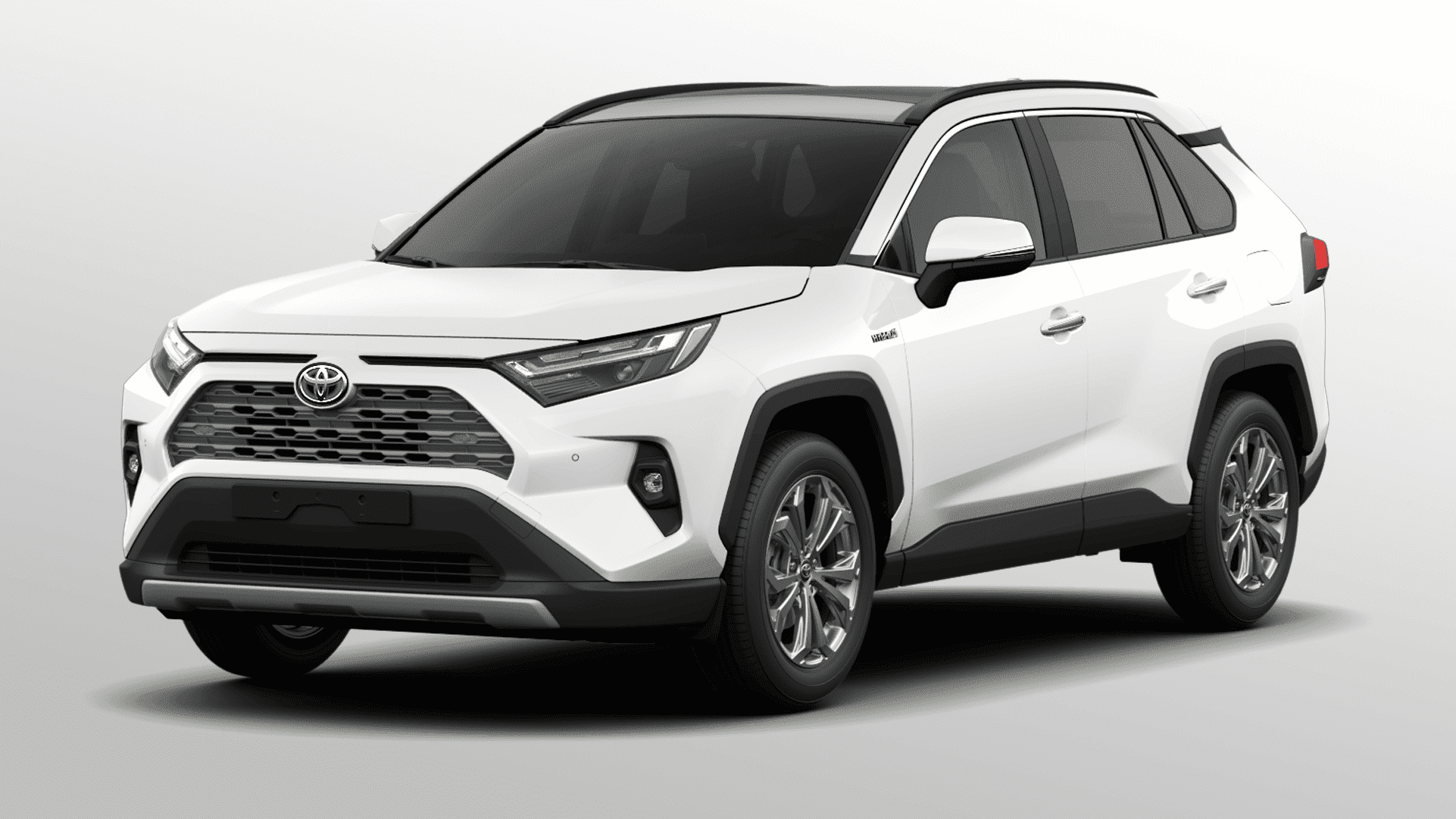The automotive industry has seen remarkable shifts over the past few decades, particularly with the growing popularity of sport utility vehicles (SUVs). Among the many contenders in this competitive market, the Toyota RAV4 stands out as a global phenomenon. As one of the pioneers of the compact SUV segment, the RAV4 has evolved from a niche vehicle to a cornerstone in Toyota’s lineup and the best-selling SUV in the world. Its success story is not merely a result of its design, technology, or performance, but a reflection of its ability to adapt to consumer preferences and changing market dynamics.
This article explores the rise of the Toyota RAV4 in the SUV market, examining its history, the innovations it introduced, and the reasons for its sustained popularity. We’ll delve into how the RAV4 has redefined the compact SUV segment, revolutionized Toyota’s presence globally, and set new benchmarks for sustainability with its hybrid and electric models.
Early Days of the Compact SUV Market
Before discussing the RAV4’s rise, it’s crucial to understand the landscape of the SUV market before its introduction. In the late 1980s and early 1990s, the term “SUV” typically referred to large, rugged, off-road capable vehicles like the Jeep Cherokee and Ford Bronco. These vehicles were designed for adventure seekers who needed durability, off-road capability, and towing power.
However, there was a growing consumer demand for a smaller, more versatile vehicle—one that combined the ruggedness of traditional SUVs with the convenience and efficiency of passenger cars. This gap in the market gave birth to the compact SUV segment, and Toyota, with its keen understanding of consumer needs, was ready to fill it with the introduction of the RAV4.
FREE: Quickly identify and understand problems with your vehicle 🚘
CLICK HEREBirth of the Toyota RAV4
The Toyota RAV4, introduced in 1994, was a bold departure from the traditional SUV mold. Its name, standing for “Recreational Active Vehicle with 4-Wheel Drive,” reflected its dual purpose: to offer both urban practicality and off-road potential. This was the first compact SUV from Toyota, and it entered the market with a clear objective—to create a vehicle that was smaller than traditional SUVs, more fuel-efficient, and easier to drive in urban environments.
The first-generation RAV4 was built on a unibody platform, a stark contrast to the body-on-frame construction used by traditional SUVs. This unibody design made the RAV4 lighter, more fuel-efficient, and more agile, which appealed to a broader audience, including families and urban dwellers. It featured an optional four-wheel drive system, making it capable of handling light off-road terrain, but its primary focus was comfort, practicality, and versatility.
Evolution of the Toyota RAV4
Over the years, the Toyota RAV4 has gone through several transformations, each reflecting changes in consumer preferences, technological advancements, and market trends. The RAV4’s evolution can be divided into five generations, each playing a significant role in cementing its status as a leader in the compact SUV segment.
First Generation (1994-2000)
The first-generation RAV4 was a revelation. It offered something for everyone—a compact size, decent off-road capability, and the ride comfort of a passenger car. The initial model was available in both three-door and five-door configurations, with either front-wheel drive or all-wheel drive. Under the hood, the RAV4 came with a 2.0-liter inline-four engine that provided enough power for its size and weight.
What made the first-generation RAV4 truly special was its versatility. It was practical for city driving, thanks to its compact dimensions, but it also had enough ground clearance to handle weekend adventures. This balance between urban comfort and off-road readiness helped the RAV4 carve out a unique niche in the automotive market.
Second Generation (2000-2005)
By the time the second-generation RAV4 was launched in 2000, the compact SUV segment was growing rapidly, and competition was intensifying. To stay ahead, Toyota introduced a larger, more refined RAV4 that continued to appeal to a broad audience.
The second-generation RAV4 was designed with a more sophisticated look, with smoother lines and a more aerodynamic profile. It also grew in size, offering more interior space, which made it even more attractive to families. The engine options were expanded as well, with a more powerful 2.4-liter engine available alongside the original 2.0-liter option.
This generation also marked the introduction of more advanced safety features, including anti-lock brakes and electronic stability control, positioning the RAV4 as not only practical but also safe—a key factor for families looking for a reliable vehicle.
Third Generation (2005-2012)
The third generation, introduced in 2005, represented a significant shift for the RAV4. It was larger than its predecessors, offering more interior room and cargo space, and it came with the option of a V6 engine, which provided a significant boost in performance. This move toward a larger, more powerful vehicle reflected the growing demand for SUVs that could serve as primary family vehicles, rather than secondary adventure vehicles.
The third-generation RAV4 also marked the introduction of more luxury-oriented features, such as leather seats, advanced infotainment systems, and dual-zone climate control. These enhancements helped the RAV4 compete with rivals like the Honda CR-V and Ford Escape, which were also becoming more refined and luxurious.
The addition of a third-row seat option, although small and best suited for children, was another key feature that broadened the RAV4’s appeal, allowing it to compete with larger SUVs without sacrificing its compact dimensions.
Fourth Generation (2012-2018)
With the fourth-generation RAV4, launched in 2012, Toyota responded to the changing market dynamics and customer preferences. By this time, the compact SUV market was fiercely competitive, with manufacturers like Honda, Ford, and Nissan all vying for a piece of the growing pie. The fourth-generation RAV4 returned to a more compact size, reflecting a trend towards smaller, more fuel-efficient vehicles.
One of the most significant changes in the fourth-generation RAV4 was the removal of the V6 engine option, replaced by a more fuel-efficient 2.5-liter inline-four engine. This generation also marked the introduction of Toyota’s hybrid technology to the RAV4 lineup. The hybrid version, launched in 2016, combined a 2.5-liter engine with an electric motor, offering excellent fuel economy without sacrificing performance. This move towards hybridization was part of Toyota’s broader strategy to lead the automotive industry in eco-friendly technology.
The fourth-generation RAV4 also saw significant improvements in technology, safety, and comfort. Features like a power liftgate, advanced driver-assistance systems, and an improved infotainment system helped the RAV4 stay competitive in a market where consumers were demanding more from their vehicles.
Fifth Generation (2018-Present)
The fifth-generation RAV4, introduced in 2018, represents the culmination of decades of innovation, consumer feedback, and market evolution. Built on Toyota’s TNGA (Toyota New Global Architecture) platform, the fifth-generation RAV4 is more rigid, lighter, and more efficient than its predecessors. It features bold, rugged styling that gives it a more aggressive and adventurous appearance, appealing to a broader range of customers.
Under the hood, the fifth-generation RAV4 offers a range of powertrains, including the standard 2.5-liter inline-four engine and a more efficient hybrid option. In 2021, Toyota introduced the RAV4 Prime, a plug-in hybrid version that offers up to 42 miles of electric-only range and a combined 302 horsepower, making it the most powerful RAV4 ever produced.
Technology is at the forefront of the fifth-generation RAV4, with advanced features like a 7-inch touchscreen, Apple CarPlay, Android Auto, and Toyota’s Safety Sense 2.0 suite of driver-assistance systems, which includes adaptive cruise control, lane departure alert, and automatic emergency braking. These features, combined with the RAV4’s rugged yet refined design, have helped it maintain its position as a top contender in the crowded compact SUV market.
The Hybrid Revolution
One of the key factors behind the RAV4’s rise in the SUV market is its embrace of hybrid technology. Toyota has long been a leader in hybrid vehicles, and the RAV4 Hybrid, introduced in 2016, was a game-changer for the compact SUV segment.
The RAV4 Hybrid offers a combination of fuel efficiency and performance that is hard to beat. Its hybrid powertrain, which combines a 2.5-liter four-cylinder engine with electric motors, delivers impressive fuel economy without sacrificing the versatility and capability that SUV buyers expect. In fact, the RAV4 Hybrid often outperforms its gasoline-only competitors in terms of both fuel economy and acceleration.
With the introduction of the RAV4 Prime, Toyota took its hybrid game to the next level. The plug-in hybrid RAV4 Prime offers the best of both worlds—electric-only driving for short trips and the power of a gasoline engine for longer journeys. This blend of performance, efficiency, and versatility has helped the RAV4 stand out in a market where consumers are increasingly looking for eco-friendly options.
The RAV4’s Global Impact
The RAV4’s rise in the SUV market is not just a U.S. phenomenon; it has had a global impact. The RAV4 is sold in over 150 countries and regions, and it consistently ranks as one of the best-selling vehicles worldwide. In 2019, the RAV4 became the best-selling SUV in the world, and it continues to hold that title.
One of the reasons for the RAV4’s global success is its adaptability. Toyota has tailored the RAV4 to meet the needs of different markets, offering a variety of powertrains, including gasoline, hybrid, and plug-in hybrid options. The RAV4’s ability to cater to a wide range of consumers, from eco-conscious buyers to those seeking adventure-ready SUVs, has been key to its global dominance.
Conclusion
The rise of the Toyota RAV4 in the SUV market is a testament to Toyota’s ability to innovate and adapt to changing consumer demands. From its humble beginnings as a compact SUV designed for urban dwellers to its current status as the best-selling SUV in the world, the RAV4 has consistently evolved to meet the needs of a diverse and ever-growing customer base.
The RAV4’s success can be attributed to its versatility, reliability, and commitment to innovation. Whether it’s the introduction of hybrid technology, the adoption of advanced safety features, or the continuous refinement of its design, the RAV4 has always been at the forefront of the compact SUV segment. As the automotive industry continues to shift towards electrification and sustainability, the RAV4 is well-positioned to lead the way, just as it has done for the past three decades.


Leave a Reply